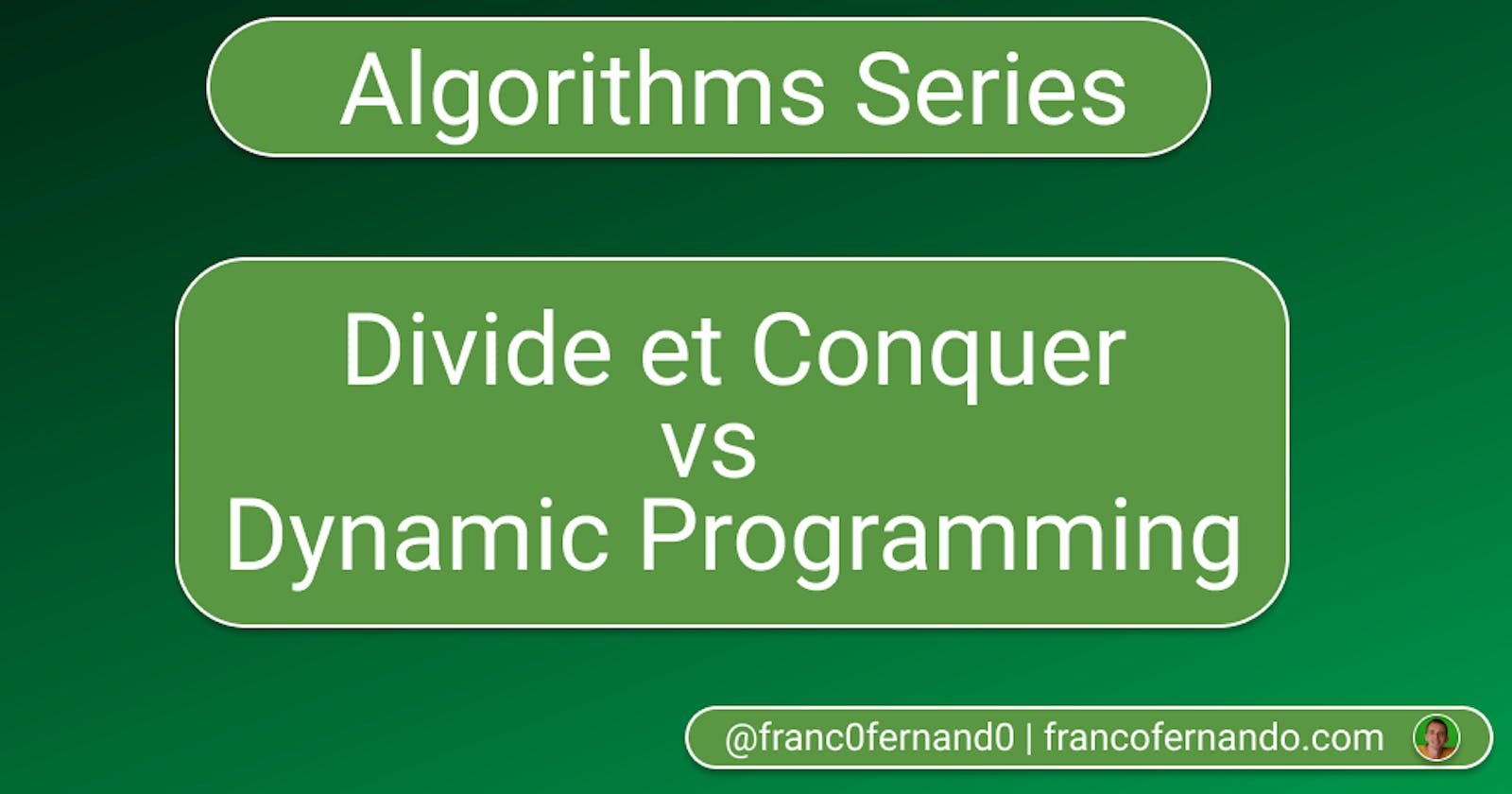Algorithms explained: Divide et Conquer vs Dynamic Programming
A guide to chose between the Divide et Conquer and the Dynamic Programming approach while designing an algorithm.
Divide and Conquer (D&C) and Dynamic Programming (DP) are 2️⃣ great algorithmic techniques. Both divide a given problem into subproblems and solve the subproblems.
How do you choose which one is better to use for solving a problem ?
To answer this question you need first to understand if the subproblems overlap or not. If they don't overlap you should use Divide at Conquer. If they overlap you should use Dynamic Programming.
Let's consider a problem P broken down into 2 smaller subproblems S1 and S2.
With Divide and Conquer you would:
- solve S1 and S2 separately
- combine their solutions in a certain way
- get the answer to P
A classic example is the mergesort algorithm, where you sort an array by:
- dividing it into 2 subarrays
- sorting the 2 subarrays independently
- merging the sorted subarrays to get the original one sorted
There is no inter-dependency between the 2 subarrays for finding the solution.
With DP the first thing you need to realise is that S1 and S2 overlap. What does it means ? Basically that there is an inter-dependency between S1 and S2.
Let's suppose that S2 depends on S1. This means that S1 has to be solved before S2 can be solved. That's exactly what DP does when implemented in bottom up way.
How ?
- solving S1 first and remembering the result.
- solving S2 utilising the remembered result for S1 (S2 depends on S1)
- solving P using the solutions of S2 and S1.
All you need to do is start from bottom (S1) and move gradually (through S2) towards up (P).
A classic example is the fibonacci sequence defined as f(n) = f(n-1) + f(n-2). Here the solution for f(n-1) depends on the solution for f(n-2). The DP approach:
- solve the problem for the smaller number first
- reuse this value to calculate the larger value
- get the final value
Thank you for reading! I'm Franco Fernando, helping you to better understand algorithms and data structures.
If you liked this post, follow me here and on Twitter to get more related content daily!

